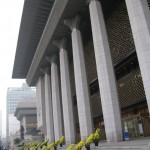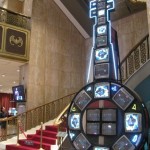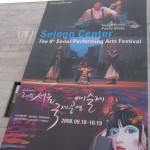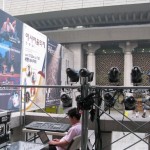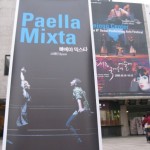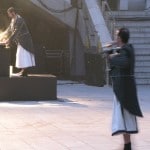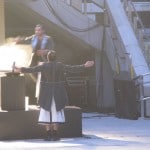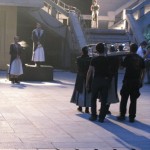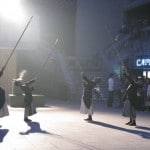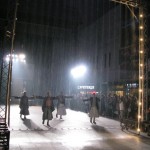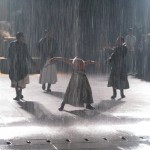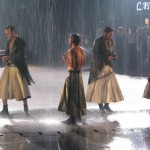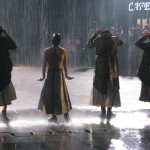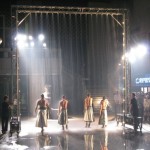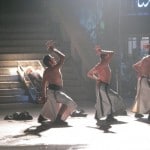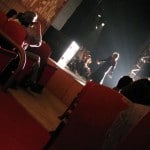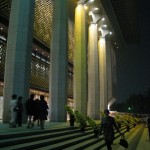The latest innovations of international and Korean contemporary performing arts were on view at the Seoul Performing Arts Festival for a month this Fall. In its ninth year, hosted in the Daehangno district of Seoul, home to nearly 100 theaters, this innovative festival challenges the definition of modern performing arts and seeks to stretch its boundaries. The Festival was founded in 2001, when the city co-hosted the FIFA World Cup Tournament with Japan. Since then, the festival has run annually in the fall, simultaneously hosted by various arts venues around the city.
SPAF features major contemporary performers of drama, dance, musical theater, and interdisciplinary arts, both local and international. Throughout its brief seven-year history, the festival has hosted over 400 international and local works to audiences numbering as many as 100,000. SPAF aims to eliminate barriers between different artistic genres and serve as a breeding ground for innovative new performance art.
And barrier breaking it certainly is! Flipping through the festival ticket book I noticed several of the shows were restricted to those under nineteen years old due to “a lot of nudity.” One of the most highly anticipated performances, “Mmm…” from the UK, has a playbill which features a nude woman doing the splits on a white rug.
This year’s festival features 21 Korean performances, 11 overseas shows and three collaborative performances. The pieces featured in SPAF range from modern interpretations of classic pieces, to a number of contemporary premiers. This years international shows come from Chile, Argentina, UK, Japan, Poland, Russia, France, Germany, Spain and USA.
‘Paella Mixta’ is a creation of the residence program at the Teatre Nacional de Catalunya done by the theater group, Sol Picὸ, in 2004. It was invited to the Shanghai International Arts Festival in 2007.
Sol Picὸ is considered one of the best dance groups in Europe and is very active in Spain. The performance centers on death. It draws the audience from the streets to the theater and presents the process from birth to death in a dramatic manner.
This work combines the fear of death and the desperate attempts at overcoming death with a touch of energetic and dramatic flamenco dance.
The audience is first seated on the outdoor steps of the Sejong Art Center. Two men wearing swim caps, rubber boots, latex matador jackets and long white kilts enter onto the stage. One of these men holds a microphone and starts rambling in an incoherent language to the crowd as the other stands on a pedestal and adds various ingredients into a sizzling pot of paella. A few moments later four men carry a glass coffin into the center of the plaza and prop it against the adjacent steps. Suddenly another man appears at the top of the staircase overlooking the coffin bellow. This other man stands out from the others as they appear to revere him and he is dressed in traditional flamenco attire. He suddenly starts motioning toward the coffin bellow and then runs into a fiery fit of flamenco feet pounding.
The four other men in kilts rip off their shirts and moon the crowd. They then grab long sticks and start fighting in the middle of the outdoor stage. Moments later a tall metal gate on wheels starts to shower streams of water bellow. Two stage hands move this gate back and forth covering the manic dancers bellow. The water seems to calm their spirits. Moments later the corpse in the coffin awakens. A wild looking woman in a torn black and red dress stands on roller-skates and starts to climb up the staircase and disappears into the theater. The soaking wet men in kilts follow her and motion us into the theater also.
Once in the theater the female corpse (who has now been brought back to life thanks to a bit of passionate tap dancing) runs around the crowd uttering obscurities and looks rather frantic. On the stage sat an impressive “cube within a cube.” A small suspended cube hung inside a larger cube for the duration of the indoor portion of the show. Things got a lot weirder and interpretation became more challenging as the show went on. The female dancer has her skirt ripped off her and then elastic bands are unwound from her torso. She then slowly has her roller-skates ripped off and replaced by ballerina points. For the first half of the show they use the lower stage which appears like a boxing ring. The smaller suspended cube above them is also used as the dancers grab hold of the bars above and perform acrobatic maneuvers with each other. Microphones are placed on each corner of the cube. Each dancer attempts to unload a passionate dialogue but they are always dragged away kicking and screaming by another dancer.
A light soon shines onto the cube above and we find the flamenco dancer sitting on a metal rocking chair. While in the seated position he quickly unloads onto the stage a passionate pounding of his feet. He soon flips over the chair and performs the flamenco in his solitary cube above the stage. A trap door is flung open and the female ballerina corpse character is thrown into the chaos. The two passionately dance. She stomps with her pointed ballerina slippers (which makes me wince as I can only imagine how painful that must be on her toes) and he performs a disturbed rendition of the flamenco. The woman appears tired and wounded from this duel and crawls back down to the lower level of the cube. Moments later a massive stream of rice is poured onto her body from above. This is the end of the show. Everyone claps in the audience and the dancers run to the front of the stage covered in rice, bowing and smiling and generally looking wet and exhausted.
This my friends, is experimental theater at its best.



